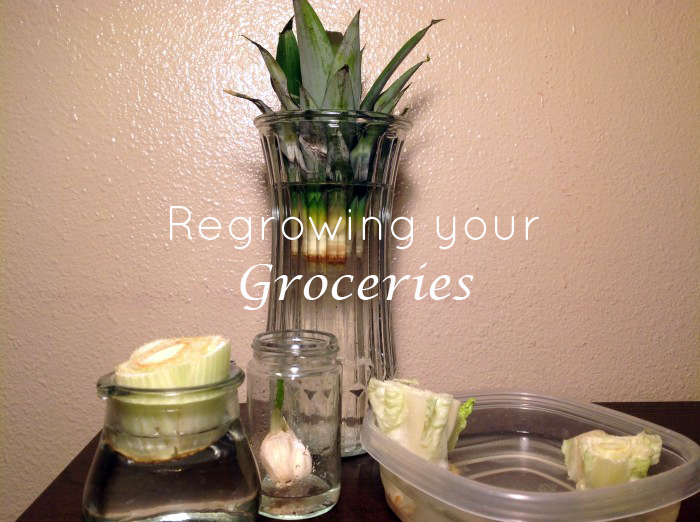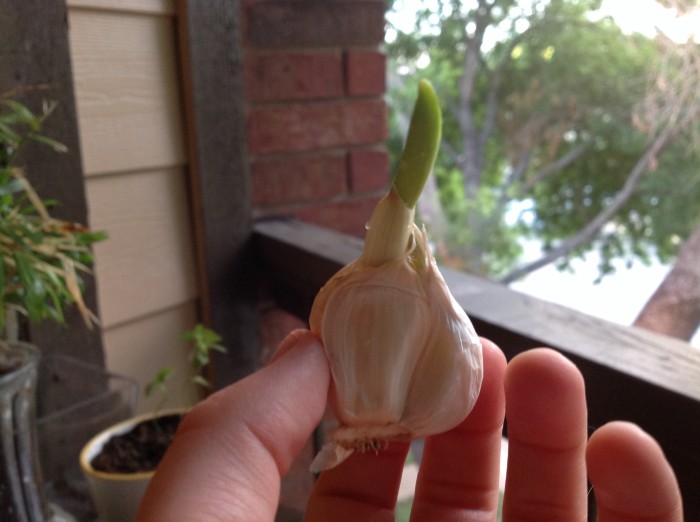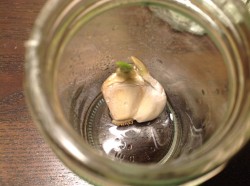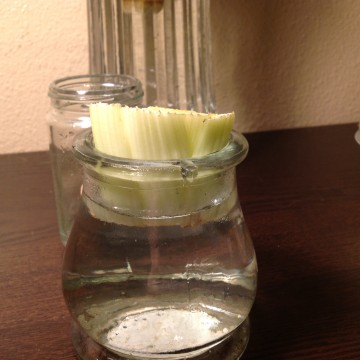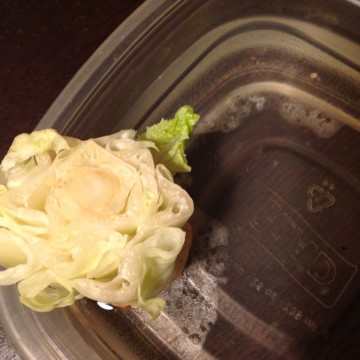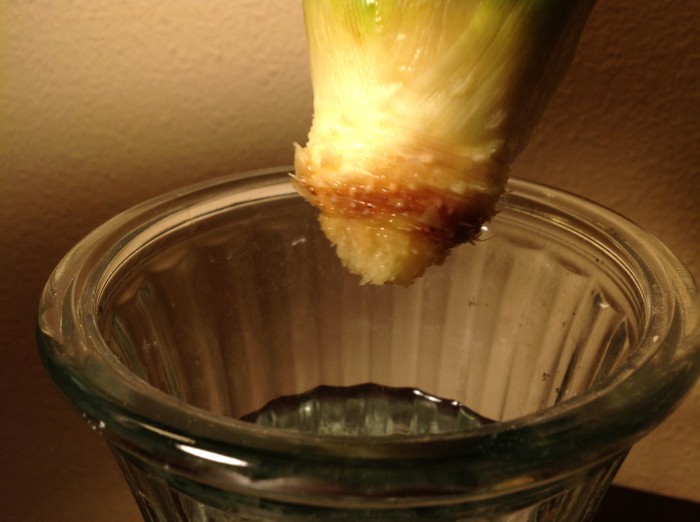Buying organic can get ultra expensive, but you can save loads of money by using the remnants of your groceries to regrow staples! If it sounds like it could be complicated–fear not, for plants do most of the work for you. For the most part all you need is water, and patience.
From time to time, I will find some garlic in my fridge with a little green sprout growing from the top. You can cut around the sprout and use the garlic if need be, but if you place the garlic clove in just enough water to cover the bottom roots, you can grow your own garlic sprouts! Make sure you are not submerging the cloves or they will rot. Change the water when it looks dirty, every 2 or 3 days, and your little sprouts can reach a height of ten inches! Cut the sprouts with scissors when ready to harvest them. Garlic sprouts have a lighter flavor than garlic and are best raw.
You can use seeds from a fresh tomato to grow your own! Simply rinse them and sow the seeds in 1/4 inch of soil. You can leave them indoors to germinate which may take up to 2 weeks.
Celery and Romaine lettuce are just as simple as garlic–just leave the bottom stump and place the bottoms in water. Place them on a sunny windowsill, changing the water when cloudy. After three days, the celery needs to be potted in soil, but the romaine can remain in water (however, it will grow larger leaves if planted). You can regrow cabbage, leeks, and green onions in this fashion as well.
You can even grow your own pineapple tree indoors from the top of a pineapple! This is a more difficult and lengthy process, taking about two or three years before your tree will produce fruit–if any. However, it is fun to grow and surprisingly easy. Twist the leaves off the top of the pineapple with your hands in a swift, strong motion. This can be a little tricky, but it’s easier than cutting around the fruit to get to the roots (which you can do as well). Peel about an inch of leaves off the base of the pineapple crown. You can let the crown dry for a few days to minimize the chances of rotting. Place the crown in water, submerging base, and change the water every few days. Keep it away from sunlight. After about three weeks, your pineapple should have healthy roots and will be ready to plant. When watering, keep the soil moist–do not let it get dry or overly wet. In two months it should have strong roots forming and should be watered once a week from this point on. After a year the pineapple tree should be repotted, with good drainage. Keep the plant inside during the winter, for the pineapple cannot abide the cold. During the spring and summer months, the plant can be placed outside, and needs at least 6 hours of sunlight per day. You may also use fluorescent lights if keeping it indoors.
Other plants you can regrow are: avocado, ginger, sweet potato, carrots, basil, fennel, onions, mushrooms, and bok choy.
Enjoy the fruits of your labor, and the freshest, cleanest food possible–what are you waiting for? Get growing! 🙂
Also by Jessica: 4 Kundalini Yoga Poses for Calm and Relaxion
Related: 10 Super Useful Cooking Tricks
__
Photo: Jessica Ferguson

